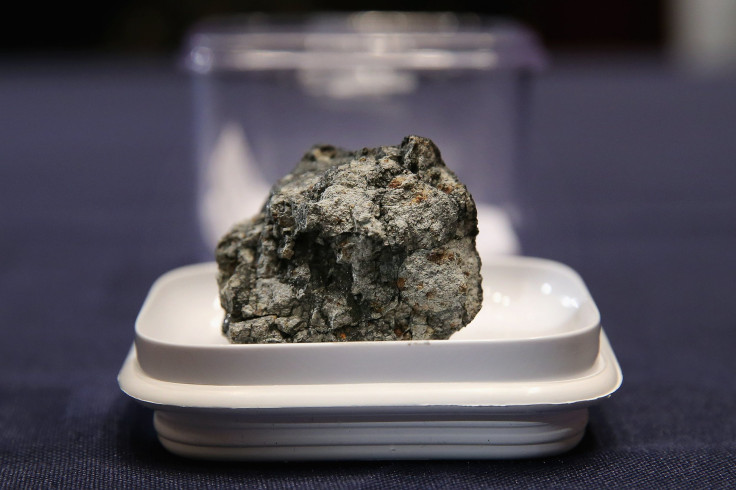'Pristine' Meteorite From Asteroid Belt Near Jupiter Holds Clues To Origin Of Earth's Water
KEY POINTS
- The meteorite fell in the driveway of a home in a small town in England
- Along with water, amino acids and other organic materials were present in the meteorite
- The finding further bolstered the theory that water on Earth came from asteroids
A meteorite collected last year may hold the key to the mystery behind the origin of water on Earth.
On Feb. 28, 2021, a meteorite that entered Earth's atmosphere over northern England broke into smaller pieces, the largest of which was collected within 12 hours after it crash-landed. The space rock came to be known as the most pristine form of a meteorite ever found.
"It's as pristine as we're going to get from a meteorite," planetary scientist Ashley King of London's Natural History Museum, said, as quoted by ScienceNews. "Other than it landing in the museum on my desk, or other than sending a spacecraft up there, we can't really get them any quicker or more pristine."
The meteorite fell in the driveway of Rob and Cathryn Wilcock in the small town of Winchcombe in the U.K. A new study, published in the journal Science Advances, found that the water precursors found in the meteorite were similar to the hydrosphere on Earth. This finding further bolstered the theory that water, the key to life on Earth, came from asteroids.
After detailed analysis, researchers found that the meteorite, originating from the asteroid belt near Jupiter, is a rare, carbon-rich rock called a carbonaceous chondrite. The space rock had started its journey towards Earth around 300,000 years ago, the team calculated. This period is very short, cosmically speaking, the researchers said in the study.
The water content in the meteorite came out to be 11 percent by weight. Locked in hydrate minerals, hydrogen present in the water is a heavy hydrogen version called deuterium, chemical analysis revealed. Also, the ratio of hydrogen to deuterium in it matches that of the Earth's atmosphere.
"It's a good indication that water [on Earth] was coming from water-rich asteroids," King said. Along with water, amino acids and other organic materials were also present in the meteorite.
"These are the building blocks for things like DNA," King said. The 530 grams of the meteorite collected from Winchcombe and other sites, including a sheep field in Scotland "don't contain life, but they have the starting point for life locked up in them," King added.
"It's always exciting to have access to material that can provide a new window into an early time and place in our solar system," planetary scientist Meenakshi Wadhwa of Arizona State University in Tempe, who was not involved in the study, said.
Wadhwa hopes that the next step would be to compare the Winchcombe meteorite with the samples collected from asteroids Ryugu and Bennu. These two asteroids which were closer to Earth than the asteroid belt were collected in two separate missions. A comparison of the three samples of space rock will further scientists' understanding of the early solar system and its evolution.

© Copyright IBTimes 2025. All rights reserved.





















